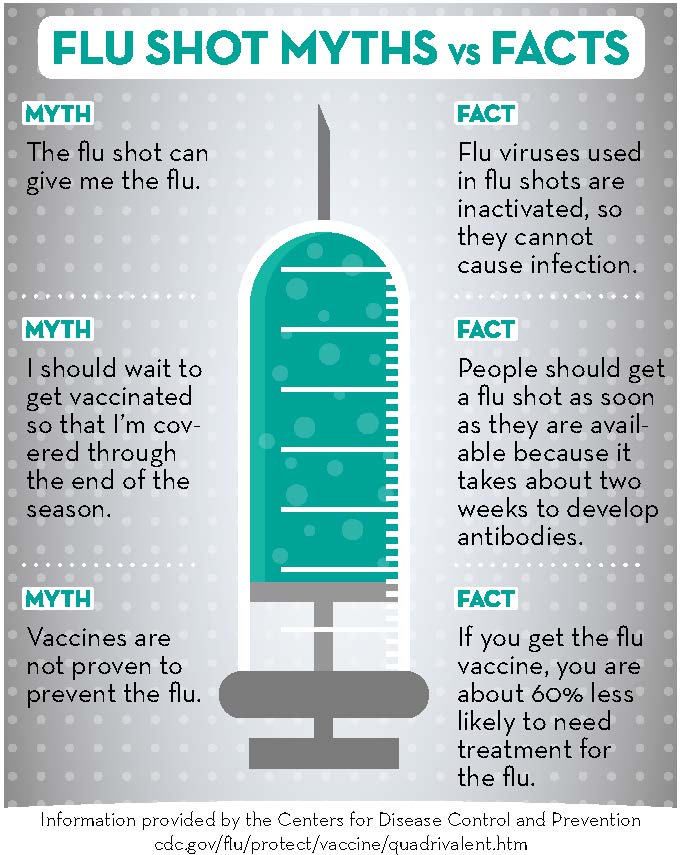Cold temperatures push everyone inside this time of year, with the opportunity to be amongst friends and family becoming more of a mandatory, rather than a voluntary endeavor.
This close proximity to one another during the winter months also has an unfortunate byproduct; illness. According to the Centers for Disease Control, the 2014-15 flu seasons reached epidemic proportions at a far earlier time than it normally does. We spoke with Lisa Vernon, Public Health Nurse at CPN Health Services, about how Tribal members and employees can stay healthy and safe in the winter months.
 Why is there a prevalence of influenza during the winter months?
Why is there a prevalence of influenza during the winter months?
“The flu is more prevalent during cold months because the flu virus is able to live longer – almost 24 hours – with the low temperatures and low humidity of winter, as opposed to approximately an hour with the high temperatures and high humidity found in the summer. With the longer life of the virus, the possibility of transmission to another person is much increased. Other factors may be poorly circulating indoor air causing higher probability of viral transmission through coughing or sneezing, and reduced sunlight leading to lower Vitamin D levels which can reduce immunity.”
What are some ways to prevent getting the flu?
“The best ways to avoid catching the flu are to wash your hands and get the flu vaccine each year. Viruses can live for a short period of time on hard surfaces and are expelled with every cough or sneeze of an infected person. Touching these surfaces then touching your face will transmit these viruses to you.
“The flu vaccine is adapted each year to fit the most likely forms of the flu virus for that year. Some years this works, some it does not. Last year the H3N2 flu virus changed slightly in December to another form that was not present in the vaccine. This caused an unexpected increase in flu cases in January and February. This past winter the CDC was determining the forms of the flu virus to includein this year’s vaccine. This new influenza A form was added in addition to a new form of influenza B. Hopefully this year’s vaccine will be a good match for the circulating viruses.
“Obviously, one of the main ways we spread the flu is person-to-personwhen we are sick. The amount of time a person remains quarantined, or not at work, needs to be for the full time that the virus is alive. The CDC reports that the flu virus is alive and transmittable to another personfrom one day prior to illness to five to seven days later. That’s why we keep getting it.”
So how do you know you have the flu? What is the difference between it and a cold?
“I always say that when you get theflu, you know it. It has a rapid onset with fever, body aches, exhaustion, and possibly nausea and diarrhea. These are in addition to the normal cold symptoms of stuffy nose, sore throat and cough. The flu is not improved with an antibiotic. The trouble with diagnosing the flu in a clinic setting is that the laboratory nasal swab can accurately detect a case of the flu only 50 percent of the time. With this kind of accuracy, the test cannot be the basis for determining if someone has the flu or needs to stay home with the flu. As I said, when you get the flu, you know it, positive lab test or not.”
If you would like more information on the Tribal health services, please visit cpn.news/flu or call 405-273-5236.
